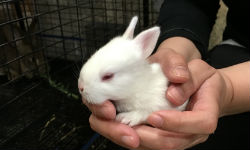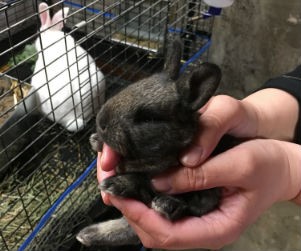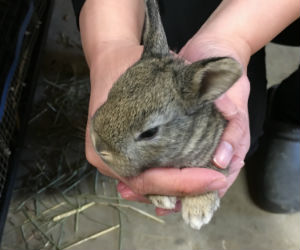 The kits can now exit and enter the nest boxes at will, and are typically out of the boxes in the morning. In just a few days, we’ll remove the nest boxes entirely. That means the poor does won’t have respite from the always-hungry kits, and those youngsters are relentless.
The kits can now exit and enter the nest boxes at will, and are typically out of the boxes in the morning. In just a few days, we’ll remove the nest boxes entirely. That means the poor does won’t have respite from the always-hungry kits, and those youngsters are relentless.
We’ve seen the kits nibbling on hay (and even nest box straw), so it’ll be a welcome change for them to be on pasture when they’re weaned. Of course, that also requires building additional rabbit tractors. Lessons we’ve learned over the course of building 3 rabbit tractors and the original chicken tractor: (1) don’t buy lumber from the local home improvement chain store unless you like twisted, messed-up lumber that is often miscategorized (e.g., lumber placed in the wrong slot so it’s actually not the dimensions you thought you were buying) and (2) never let the employees at that store cut your lumber (unless you don’t mind it being cut wrong – significantly wrong). Seriously, don’t do it unless you want to add extra frustration to your projects.
Back on topic – we also want to ensure that the rabbits can be safely handled when they’re older, so we make a point of picking them up and examining them periodically. While it hasn’t happened often with ours, rabbits can scratch or even bite. We’ve been scratched, and it’s similar to a cat scratch – remember, they dig burrows with those nails, and they have powerful legs. The kits are surprisingly strong and squirmy, and they didn’t exactly cooperate for photos, but we still managed to get a few.


The bucks have been out on pasture in the tractors even through the coldest parts of winter, and they seem very happy that so much new green growth has appeared. Given the choice between hay and fresh grass, our rabbits eat the grass (and other greens that grow with the grass) first…and good grass seems to grow healthy rabbits!
